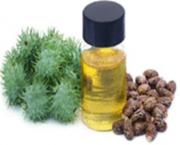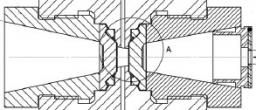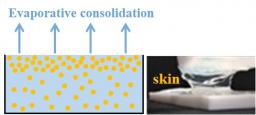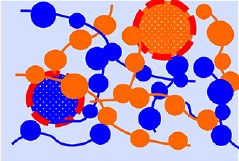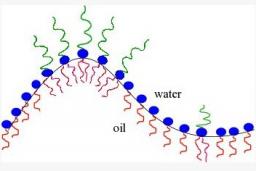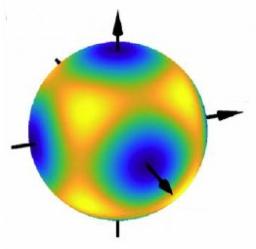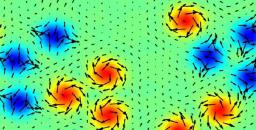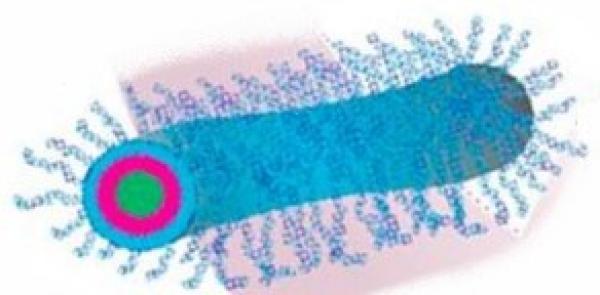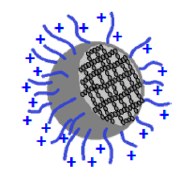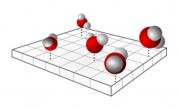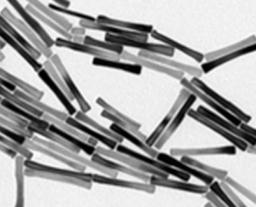20 juin 2019
A. Theodoratou, L.-T. Lee, J. Oberdisse and A. Aubert-Pouëssel, Langmuir 35(20) (2019) 6620.
Abstract :
Nanofilms of about 2 nm thickness have been formed at the air–water interface using functionalized castor oil (ICO) with cross-linkable silylated groups.
04 mai 2019
B. Annighöfer , A. Hélary, A. Brulet, A. Colas de la Noue, C. Loupiac and S. Combet
Review of Scientific Instruments 90 (2019) 025106
Abstract :
We report on a high pressure (HP) cell designed for the determination of the structure of molecular solutions by small-angle neutron scattering (SANS). The HP cell is fitted up with two thick metallic windows that make the device very resistant under hydrostatic pressures up to 600 MPa (or 6 kbar).
05 mars 2019
Annelies Sels, Giovanni Salassa, Fabrice Cousin, Lay-Theng Lee, Thomas Bürgi,
Nanoscale 26 (2018) 12754.
Aromatic dithiol linkers were used to prepare aggregates of Au25(SR)18 clusters (SR: thiolate) via ligand exchange reactions. Fractions of different aggregate sizes were separated by size exclusion chromatography (SEC).
04 mars 2019
Marguerite Léang, Didier Lairez, Fabrice Cousin, Frédérique Giorgiutti-Dauphiné, Ludovic Pauchard, Lay-Theng Lee
During evaporative drying of a colloidal dispersion, the structural behavior at the air-dispersion interface is of particular relevance to the understanding of the consolidation mechanism and the final structural and mechanical properties of the porous media.
15 février 2019
Burkhard Annighöfer, Arnaud Hélary, Annie Brûlet, Alexandre Colas de la Noue, Camille Loupiac, and Sophie Combet
We report on a high pressure (HP) cell designed for the determination of the structure of molecular solutions by small-angle neutron scattering (SANS). The HP cell is fitted up with two thick metallic windows that make the device very resistant under hydrostatic pressures up to 600 MPa (or 6 kbar).
12 décembre 2018
Souha Ben Mahmoud, Wafa Essafi, Annie Brûlet and François Boué
The chain conformation in sulfonated polystyrene PSSNa of a degree of sulfonation 0.34 ≤ f ≤ 1, i.e., of various hydrophobicity, is followed in mixtures of water and increasing content of tetrahydrofuran (THF), a good solvent of the hydrophobic polystyrene moieties (which improves the solvent quality of the mixture).
20 novembre 2018
Jyotsana Lal
This article is dedicated to the memory of Loic Auvray
The results on Winsor phases, droplet and bicontinous microemulsions phases with polymer-grafted lipids studied by Small Angle Neutron Scattering (SANS) are reported below, together with the contrast variation techniques used to characterize the average curvature in the system.
15 octobre 2018
Raphael Dos Santos Morais, Olivier Delalande, Javier Perez, Dominique Mias-Lucquin, Melanie Lagarrigue, Anne Martel, Anne-Elisabeth Molza, Angelique Cheron, Celine Raguenes-Nicol, Thomas Chenuel, Arnaud Bondon, Marie-Sousai Appavou, Elisabeth Le Rumeur, Sophie Combet, and Jean-Francois Hubert
Scaffolding proteins play important roles in supporting the plasma membrane (sarcolemma) of muscle cells.
24 septembre 2018
Fengjiao Qian, Lars J. Bannenberg, Heribert Wilhelm, Grégory Chaboussant, Lisa M. Debeer-Schmitt, Marcus P. Schmidt, Aisha Aqeel, Thomas T. M. Palstra, Ekkes Brück, Anton J. E. Lefering, Catherine Pappas, Maxim Mostovoy, Andrey O.
29 août 2018
I. Mirebeau, N. Martin, M. Deutsch, L. J. Bannenberg, C. Pappas, G. Chaboussant, R. Cubitt, C. Decorse, and A. O. Leonov
Reentrant spin glasses are frustrated disordered ferromagnets developing vortexlike textures under an applied magnetic field. Our study of a Ni0.81Mn0.19Ni0.81Mn0.19 single crystal by small angle neutron scattering clarifies their internal structure and shows that these textures are randomly distributed.
20 juin 2018
Unravelling a mechanism of action for a cecropin a‑melittin hybrid antimicrobial peptide: the induced formation of multilamellar lipid stacks
T. Silva, B. Claro, B. F. B. Silva, N. Vale, P. Gomes, M.-S. Gomes, S. S. Funari, J. Teixeira, D. Uhríková, and M. Bastos, Langmuir, 2018, 34 (5), pp 2158–2170.
An understanding of the mechanism of action of antimicrobial peptides is fundamental to the development of new and more active antibiotics.
04 mai 2018
Anne-Sophie Robbes, Fabrice Cousin , Florian Meneau, and Jacques Jestin
We probe by SANS the conformation of polymer chains of the matrix in various nanocomposites based on the same building blocks, namely spherical magnetic nanoparticles of maghemite (γ-Fe2O3) as fillers and polystyrene (PS) for the matrix.
17 avril 2018
Structural characterization of nanoparticles formed by fluorinated poly(2-oxazoline)-based polyphiles,
Anna Riabtseva, Leonid I. Kaberov, Laurence Noirez, Vasyl Ryukhtin, Corinne Nardin, Bart Verbraeken, Richard Hoogenboom, Petr Stepanek, Sergey K. Filippov, European Polymer Journal 99 (2018) 518.
24 mars 2018
Cationic thermoresponsive poly(n-vinylcaprolactam) microgels synthesized by emulsion polymerization using a reactive cationic macro-raft agent
L. Etchenausia, E. Deniau, A. Brûlet, J. Forcada and M. Save, Macromolecules (2018) sous presse.
21 mai 2016
Sur Terre, l'eau est une substance abondante, dont le cycle d'évaporation - condensation – solidification (transitions vapeur – liquide - solide) relève de l'expérience quotidienne. Les propriétés physiques de l'eau et son diagramme de phase complet sont cependant bien plus complexes que ne le laisse paraitre ces propriétés familières.
17 novembre 2014
Au quotidien, les aimants permanents sont partout présents dans les dispositifs technologiques qui nous entourent. Aujourd’hui, il y en a 4 types principaux sur le marché mondial : NdFeB, ferrite, SmCo et AlNiCo, dont 65% contiennent des terres rares, essentiellement du néodyme.
11 novembre 2013
Les vésicules, simples compartiments dont la membrane isole deux milieux aqueux, sont proposées comme nano-réacteurs chimiques ou comme vecteurs pouvant transporter et délivrer à un emplacement ciblé des molécules d’intérêt, en imitation de fonctions biologiques (l'étude de l'échange entre cellules via des vésicules est l'objet du Prix Nobel de Physiologie-Médecine 2013).
26 avril 2013
Dans la conception du cœur d'un réacteur nucléaire, les matériaux de structure doivent être sélectionnés en ayant une bonne maitrise de leurs propriétés mécaniques et de leur tenue sous irradiation. La dispersion nanostructurée d'oxyde (aciers ODS : Oxide Dispersion Strengthening) est une méthode pour durcir les aciers.
30 août 2011
Des solutions savonneuses qui moussent, cela n’est pas extraordinaire ; une mousse de savon stable pendant plusieurs mois, même à 60°C, cela l’est davantage. Et d’autant plus, si cette mousse est élaborée par "chimie verte" à partir d’une substance naturelle. Enfin, cette mousse peut être rapidement détruite en modifiant simplement sa température, et ceci de façon réversible.
21 avril 2011
Jacques Jestin, Nicolas Jouault, Chloé Chevigny, François Boué, Laboratoire Léon Brillouin, CEA Saclay
Un moyen d'améliorer les propriétés mécaniques des matériaux plastiques est de les renforcer par des nanoparticules, en formant ainsi un matériau composite.












